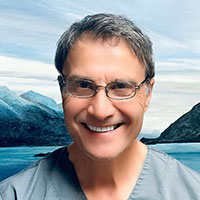Planning cases on “auto-pilot,” may save time and money, may be compatible with both the wishes of the dentist and the patient. But it may also be thought of as… “CONVENIENT ENGINEERING” and is not necessarily in the best interest of all concerned. This way of thinking also pre-empts the opportunity to “fit the pieces of the puzzle” together so that they actually fit better and erodes the creativity and innovation within us.
- The result….MONOTONY and the LOSS of PASSION for what we do. (Michael Cohen, “Interdisciplinary Treatment Planning, Quint Dec. 2011”).
The course will provide a comprehensive approach to treatment planning of the natural dentition and harmonizing esthetics with occlusion.
Upon completing this course:
- Minimum requirements of the comprehensive oral exam (COE).
- How to transition the typical general practice from emergency care to comprehensive care.
- Differentiate the ‘full assessment tooth by tooth approach versus a comprehensive approach to interdisciplinary planning.
- Understand the sequence of treatment planning and how it differs from the sequence of execution.
- Learn why the treatment planning algorithms will work for the simplest cases right up to the most complex and complicated cases.

